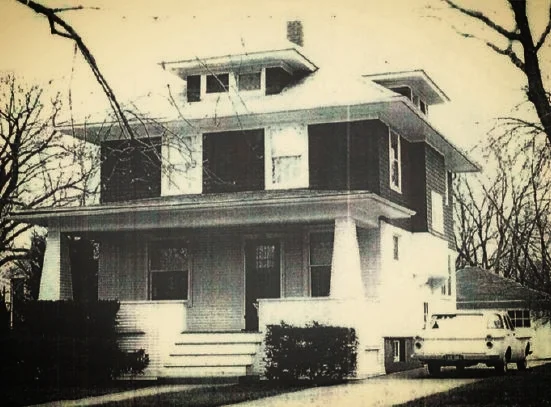1120 CEDAR AVENUE
HISTORIC SIGNIFICANCE
1120 Cedar Avenue was built in 1919 for Theodore and Ann Leidig for $4,500 and remains essentially unaltered since its construction. Theodore was a tool and die maker for the Watch Case Factory. He was born in 1863 in New Jersey, and both of his parents were natives of Germany. Prior to building 1120 Cedar, Theodore and Annie rented the property at 850 Cedar Avenue. The Leidigs remained in the home for 20 years.
The second owners, Raymond Graening and his second wife, Elsie, purchased the house in 1939. Raymond was a machinist at the Elgin National Watch Factory. Raymond and Elsie owned the home for 26 years until Raymond’s passing in 1965.
ARCHITECTURAL SIGNIFICANCE
1120 Cedar Avenue is an example of an American Foursquare with Prairie Style elements. The style enjoyed its greatest popularity from about 1905 until 1915. Vernacular examples, such as 1120 Cedar Avenue, were popularized in house plan books, mail order home catalogs and popular magazines.
The house type is defined by a low-pitched hipped roof with wide eaves on a predominantly two-story structure with one-story wings or porches, massive porch supports, and façade detailing emphasizing the horizontal line. The form of the house is foursquare, as it contains a hipped roof with two stories, typically with four rooms on each story. In the case of 1120 Cedar Avenue, all these characteristics are present, although on a modest scale.
TIMELINE OF PREVIOUS OWNERS
Sources: 2016 Heritage Plaque Application; Audio: TextAloud





